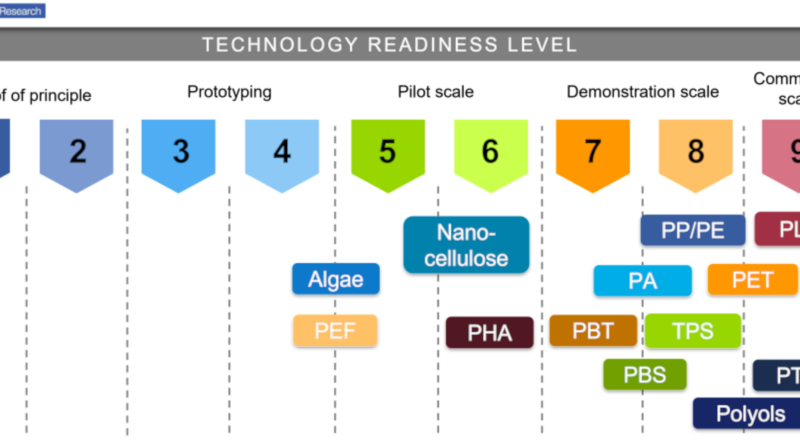Bioplastics to rapidly expand with CAGR 10.1%, says IDTechEx
As bioplastic materials transition from being a “nice-to-have” to materials with a very strong, viable business case, manufacturers are racing to keep up with demand. Brand-owners, striving to hit their decarbonisation targets by taking the initiative to transition to bioplastics, are generating a stronger brand-owner pull than ever before. This demand is further exacerbated by legislators around the world, who are cutting down on fossil-based plastic use with single-use plastic bans. Together, these major factors are pressurising players across the bioplastics industry to commercialise their materials and ramp up production. With all this activity, IDTechEx forecasts global annual bioplastics production capacity to grow at a CAGR of 10.1% over the next ten years.
IDTechEx have released their latest research on bioplastics in the report “Bioplastics 2023-2033: Technology, Market, Players, and Forecasts”, which evaluates the technologies and trends that are bringing more sustainable biobased materials to the plastic industry. In the report, IDTechEx evaluates the technologies for polymerising synthetic biobased polymers and extracting naturally occurring polymers. It tracks the huge industry activity that has been happening and discusses the trends and challenges surrounding bioplastics, considering these in a granular 10-year forecast.
Battle for biobased bottles
Plastic bottles are a massive fossil-based problem for drink makers. Currently, manufacturers can produce bottles made from partially biobased polyethylene terephthalate (PET), but there is no 100% biobased solution commercially available. That is because one building block of PET, called terephthalic acid (TPA) remains a material made from fossil oil. Two options are vying to replace fossil-based TPA in plastic bottles. One is to develop a biobased TPA to get 100% biobased PET. The other is to switch out TPA entirely for another similar but entirely biobased acid. This would make another polymer, polyethylene furanoate (PEF), which hopes to disrupt the biobased PET market as a cheaper alternative with superior properties. For now, both options have yet to produce on a commercial scale, but 100% biobased PET is close. In their new report, IDTechEx compares biobased PET and PEF and discusses the future of the plastic bottle industry.
Sustainable end-of-life options
A key factor driving companies to adopt bioplastic materials is their seemingly sustainable end-of-life processing. However, a major misconception is that all biobased plastics are biodegradable. In reality, some bioplastics cannot be biodegraded or recycled effectively. For example, polylactic acid (PLA), the most widely produced 100% biobased plastic, can be industrially composted, but this provides no nutritional value to the compost, so there are few off-takers in the industry. Meanwhile, recycling PLA requires dedicated infrastructure that is uncommon and very expensive to adopt. As a result, most PLA is mismanaged or goes to landfill. Expanding the end-of-life options available is a great opportunity for PLA to grow its value as a bioplastic material. In the report, IDTechEx discusses the end-of-life options available for each bioplastic type, why some options are more valued than others, and how current bioplastic materials are being treated at the end of life.
Capitalising on the potential of naturally occurring bioplastics
Naturally occurring bioplastics will likely be the fastest growing segment in the years to come. Extracted directly from biological organisms, these polymers are renewable, biodegradable, and non-toxic. They are also excellent barriers of oxygen, with anti-microbial and antioxidant properties, making them ideal materials for food packaging, agriculture, and cosmetics. Despite being a young industry segment, naturally occurring bioplastic companies are forming many promising partnerships with high-profile brand-owners. IDTechEx’s new report delves into the corporate activity of this rapidly expanding segment and analyses the science behind the material innovations.

